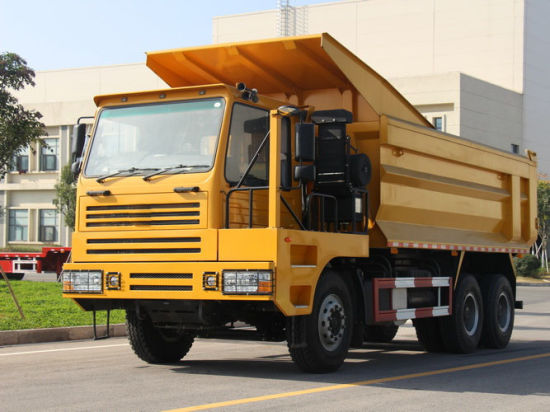Application Insights

INDUSTRIAL/EXCAVATORS ETC...
Excavators are heavy machines used for digging, demolition, and other construction tasks. Like any machine, excavators require starters and alternators to operate efficiently. Below are some insights on excavator starters and alternators.
Starters:
1. The starter is an electrical motor that spins the engine until it starts.
2. Excavator starters are generally located near the engine or transmission.
3. A starter motor has internal gears that rotate the engine’s flywheel to start the engine.
4. Most excavator starters use a solenoid to engage the starter motor’s gear with the engine’s flywheel.
5. Starters may fail due to a damaged solenoid, worn brushes, or a faulty armature.
6. A faulty starter can cause the engine to fail to start or crank slowly.
Alternators:
1. An alternator is an electrical generator that produces energy to charge the battery and power the electrical system.
2. Excavator alternators are generally located near the engine or transmission.
3. Alternators use electromagnetic induction to create an electrical current from a rotating magnetic field.
4. Alternator problems may include damaged winding, faulty diodes, or a failed pulley system.
5. A faulty alternator can cause the battery to not charge or the electrical system to malfunction.
6. Routine maintenance, such as checking the belts and connections, can prevent alternator failure.
Overall, the starters and alternators are vital components of excavator machinery, and regular maintenance can prevent costly repairs and downtimes.
Automotive starters and alternators are essential components of a vehicle's electrical system. Starters are responsible for turning the engine over when the ignition key is turned, while alternators are responsible for generating electricity to power the vehicle's electrical system and recharge the battery.
In recent years, there has been a trend towards more efficient and environmentally friendly starters and alternators. For example, many newer vehicles now use stop/start technology, which shuts off the engine when the vehicle is idling in traffic or at a stoplight to save fuel. This places extra demands on the starter, which must be able to restart the engine quickly and reliably.
Similarly, alternators are becoming more efficient and adaptive to changing electrical demands. Many newer alternators have the ability to vary their output voltage based on the electrical load placed on them. This helps to reduce the load on the engine, improve fuel efficiency, and extend the life of the battery.
Additionally, there has been a shift towards more durable and reliable starters and alternators. Many manufacturers now use high-quality materials and advanced manufacturing processes to produce components that can withstand the demands of modern vehicles. This has led to longer warranties and increased customer satisfaction.
Finally, there is a growing market for aftermarket starters and alternators. These components are often less expensive than OEM parts, and can provide similar or better performance. However, it is important to research the quality and reputation of aftermarket suppliers before making a purchase, as not all aftermarket components are created equal.
Overall, the automotive starters and alternators market is evolving rapidly, driven by new technologies, changing consumer demands, and increasing environmental concerns. These developments are leading to better performance, efficiency, and reliability for both OEM and aftermarket components.

AUTOMOTIVE
Automotive starters and alternators are essential components of a vehicle's electrical system. Starters are responsible for turning the engine over when the ignition key is turned, while alternators are responsible for generating electricity to power the vehicle's electrical system and recharge the battery.
In recent years, there has been a trend towards more efficient and environmentally friendly starters and alternators. For example, many newer vehicles now use stop/start technology, which shuts off the engine when the vehicle is idling in traffic or at a stoplight to save fuel. This places extra demands on the starter, which must be able to restart the engine quickly and reliably.
Similarly, alternators are becoming more efficient and adaptive to changing electrical demands. Many newer alternators have the ability to vary their output voltage based on the electrical load placed on them. This helps to reduce the load on the engine, improve fuel efficiency, and extend the life of the battery.
Additionally, there has been a shift towards more durable and reliable starters and alternators. Many manufacturers now use high-quality materials and advanced manufacturing processes to produce components that can withstand the demands of modern vehicles. This has led to longer warranties and increased customer satisfaction.
Finally, there is a growing market for aftermarket starters and alternators. These components are often less expensive than OEM parts, and can provide similar or better performance. However, it is important to research the quality and reputation of aftermarket suppliers before making a purchase, as not all aftermarket components are created equal.
Overall, the automotive starters and alternators market is evolving rapidly, driven by new technologies, changing consumer demands, and increasing environmental concerns. These developments are leading to better performance, efficiency, and reliability for both OEM and aftermarket components.

POWER SPORTS
Power sports starters and alternators are critical components in various types of power sports vehicles such as ATVs, motorcycles, snowmobiles, and watercraft. These components are responsible for starting the engine and generating electrical power to run the vehicle's electrical systems.
Starters use electric motors to turn the engine's flywheel and crankshaft, initiating the combustion process. Alternators, on the other hand, generate electrical power to keep the battery charged and the vehicle's electrical systems operational.
Due to the harsh operating conditions power sports vehicles are subject to (such as exposure to water, dust, and mud), starters and alternators must be built robustly to withstand these harsh conditions. This requirement leads to specialized designs and manufacturing processes when compared to the starters and alternators used in automobiles.
Power sports starters and alternators, in addition to being robust, must also be compact to save space on the vehicle and lightweight to avoid placing undue pressure on the power sports vehicle's engine.
In conclusion, power sports starters and alternators are essential components in power sports vehicles that must be designed robustly to withstand harsh operating conditions while remaining compact and lightweight.

MARINE
Marine starters and alternators are specialized equipment designed specifically for use in boats and other watercraft. Here are some insights about these power sports components:
1. Durability: Marine starters and alternators are built to withstand harsh marine environments, including exposure to saltwater and extreme temperatures. They are often made with waterproof and corrosion-resistant materials to ensure long-lasting performance.
2. Power Output: Marine starters and alternators need to produce enough power to start the boat's engine and keep the battery charged while in use. They are typically designed to provide higher output than the equivalent components used in land-based vehicles.
3. Compatibility: When purchasing a marine starter or alternator, it is essential to ensure it is compatible with the boat's engine and electrical system. Using the wrong component can cause damage to the engine or other components.
4. Maintenance: Like any power sports equipment, regular maintenance is critical to ensure reliable performance. It is advisable to inspect marine starters and alternators regularly and replace any damaged or worn parts promptly.
5. Cost: Marine starters and alternators can be more expensive than their land-based counterparts due to their specialized design and construction. However, investing in high-quality components can save money in the long run by reducing the risk of equipment failure and costly repairs.
TRUCKS
Starter:
Function: The starter motor is responsible for cranking the engine to get it running. It engages the flywheel or flexplate, which connects to the engine's crankshaft, and this initial rotation initiates the combustion process.
Key Components: The starter assembly consists of the starter motor, a solenoid, and a small pinion gear. The solenoid is responsible for engaging the pinion gear with the flywheel when you turn the ignition key.
Common Issues: Common problems with starters include a clicking sound (usually indicative of a weak battery or a faulty solenoid), grinding noises (suggesting worn-out gears), or complete failure to turn the engine.
Maintenance: Regular maintenance involves checking the connections and ensuring the starter motor is securely fastened. If it fails, it needs to be replaced or rebuilt.
Alternator:
Function: The alternator is responsible for generating electrical power to charge the battery and power the vehicle's electrical systems. It works by converting mechanical energy from the engine into electrical energy.
Key Components: An alternator consists of a rotor, stator, voltage regulator, and diode rectifier. The rotor, driven by a belt connected to the engine, creates a rotating magnetic field within the stator, inducing an electrical current.
Common Issues: Common alternator problems include overcharging or undercharging the battery, which can lead to dead batteries, dimming headlights, and electrical system malfunctions. Other issues may involve worn-out bearings or a faulty voltage regulator.
Maintenance: Regular maintenance involves checking the drive belt for tension and wear, as well as inspecting the electrical connections. If the alternator is faulty, it often needs replacement.
ADDITIONAL INSIGHTS:
Both the starter and alternator are crucial for a truck's operation. Without a functional starter, the engine won't start, and without a working alternator, the battery will eventually drain, causing the truck to stall.
If you notice any unusual sounds or issues with your truck's starting or charging system, it's essential to have them inspected and repaired promptly to prevent further damage or breakdowns.
Routine vehicle maintenance, including battery checks and belt inspections, can help detect and address issues with the starter and alternator before they lead to more significant problems.
Truck starters and alternators come in various sizes and capacities, depending on the truck's engine size and electrical demands. It's important to select the right components for your specific vehicle.
In summary, the starter and alternator are vital components of a truck's electrical and starting systems, ensuring that the engine starts and the electrical systems operate correctly. Regular maintenance and prompt attention to any issues are essential to keep your truck running smoothly.
